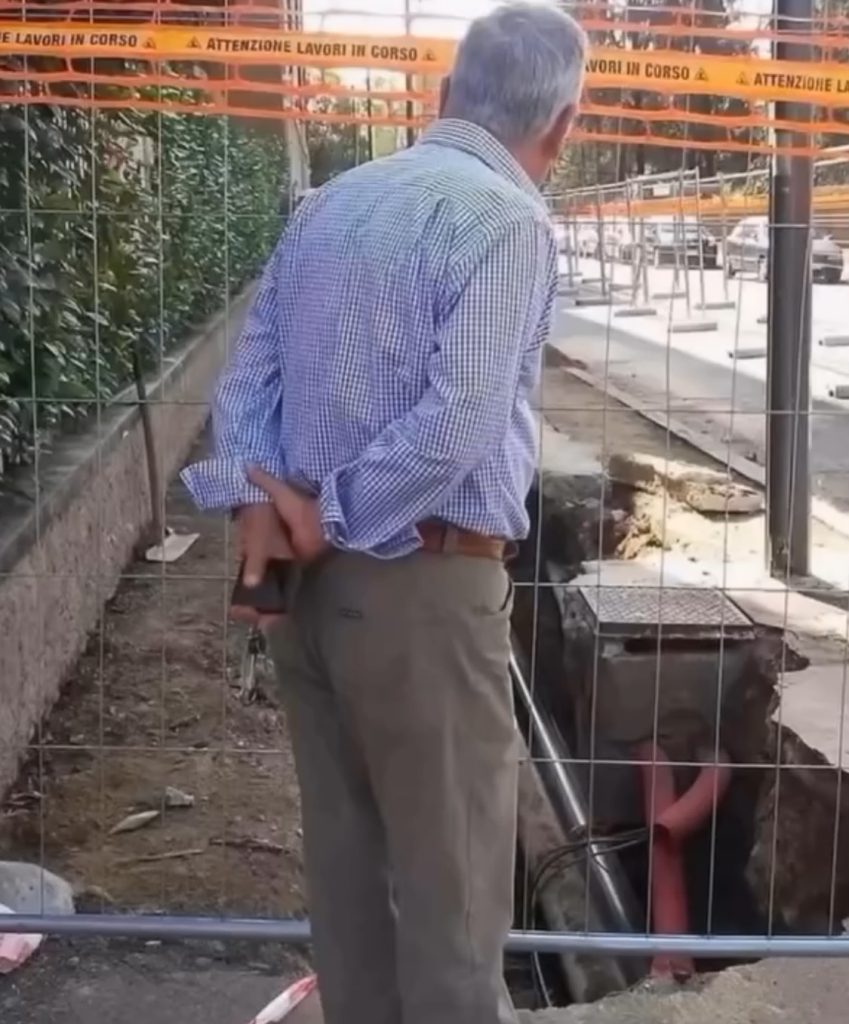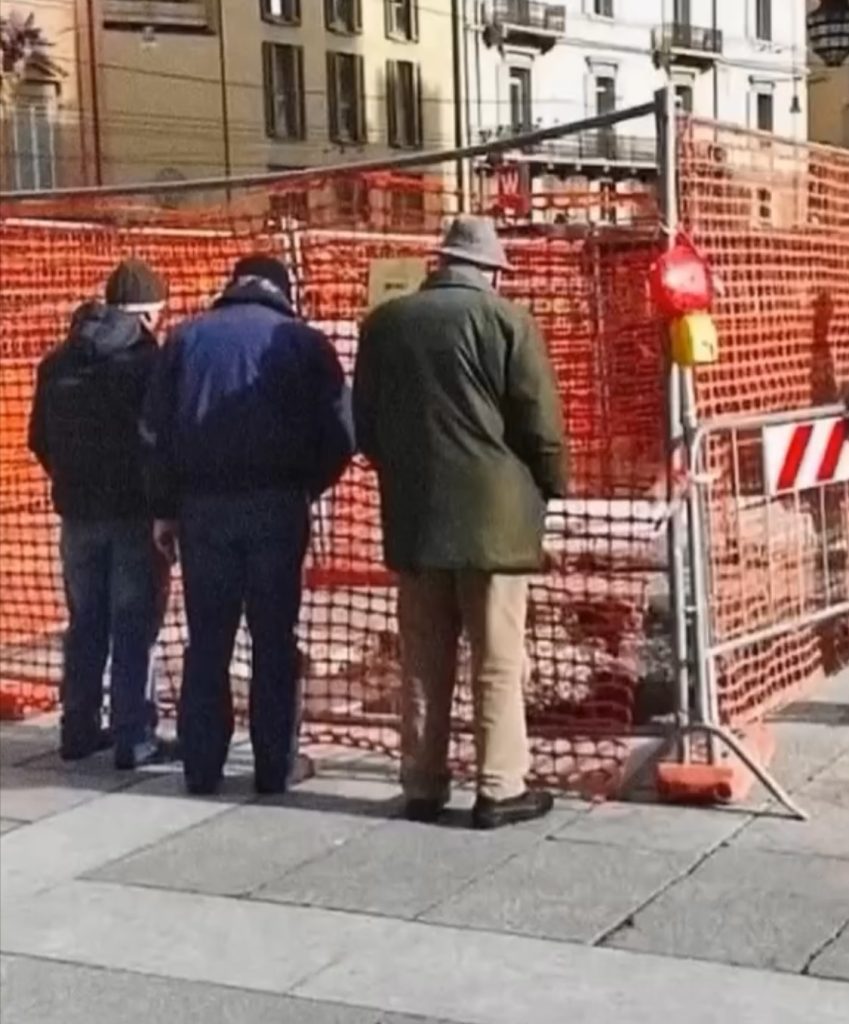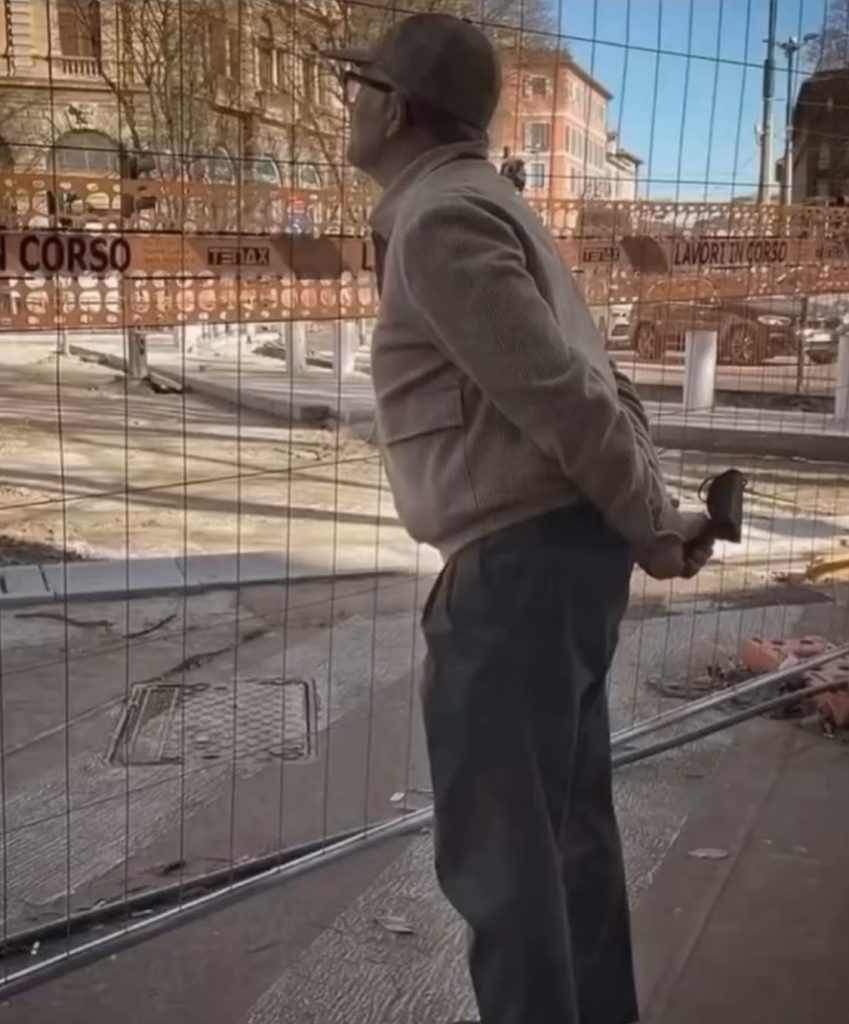In Italy, the “Umarell” Tradition Turns Retired Men Into Unofficial Overseers of Construction Sites
If you ever walk through the streets of Bologna or many other towns in northern Italy, you might notice a familiar figure standing near a construction site. It is usually an older man, his hands neatly clasped behind his back, quietly observing the movement of machines, workers, and cranes. Sometimes he will nod approvingly, sometimes he might mutter advice under his breath, and occasionally he may even stop to offer a comment to the workers themselves. This figure has a name in local culture, and it has become something of a symbol: the “Umarell.”
The word “Umarell” comes from the dialect spoken around Bologna, and it literally means “little man.” At first glance, the description might sound dismissive, but it is not meant to be insulting. Instead, it has become an affectionate way of describing the group of retired men who have turned watching construction sites into a pastime. The hands-behind-the-back pose is almost always part of the image, and it gives these observers a sense of authority, as if they are silently supervising projects that are not officially theirs to control.

What makes the tradition even more fascinating is how it has evolved from a humorous stereotype into a recognized part of local identity. The concept became so well known that the term “Umarell” entered the Italian dictionaries, solidifying its place in cultural vocabulary. For many Italians, the sight of an umarell is as ordinary as seeing scaffolding itself whenever new work is being done in the city. And yet, it carries a charm that makes people smile. It is both lighthearted and endearing, a reminder that life in retirement does not always mean sitting at home but can mean staying engaged with the world in small but meaningful ways.
Over time, the figure of the umarell has even been embraced by city officials. In Bologna, the city council once experimented with officially inviting retirees to keep an eye on public works projects, treating them almost as unpaid overseers of construction. The idea was tongue-in-cheek but carried a practical side as well, since having an extra set of eyes on site could sometimes help catch small issues or ensure that projects remained on schedule. The humor of the initiative was not lost on anyone, but it also highlighted the respect communities often hold for their elders, even when their role is informal.

The popularity of the umarell has grown beyond Bologna, spreading across Italy and even inspiring projects abroad. Books have been written about them, photo collections document their familiar stance, and social media posts capture their quiet presence at work sites. The fascination lies not just in the figure itself, but in what it represents. An umarell is a symbol of curiosity, patience, and a desire to stay connected to everyday life, even after formal responsibilities have ended.
There is also a subtle beauty in the role they play. Construction sites are usually places of noise, chaos, and urgency, but an umarell brings a touch of stillness to the scene. He stands silently, watching without rushing, reminding everyone that there is value in simply observing. In a way, the umarell embodies a philosophy that goes beyond Italy: that staying curious and engaged, no matter how small the gesture, adds meaning to daily life.

Today, when people speak of the umarell, it is often with warmth and a sense of humor. It is not about making fun of retirees but about celebrating them for finding joy in the rhythm of their cities. Some might laugh at the image of older men watching construction, but there is something touching about it too. It reflects a love for community, a sense of belonging, and perhaps even a wish to continue contributing in small ways.
So the next time you pass a construction site in Italy and see an elderly man standing with his hands folded neatly behind his back, know that you are witnessing a piece of living culture. He is not just watching the work—he is carrying forward a tradition that blends humor, history, and a very human desire to remain part of the story of his city. The umarell may be called a “little man,” but in his own quiet way, he represents something quite big.

